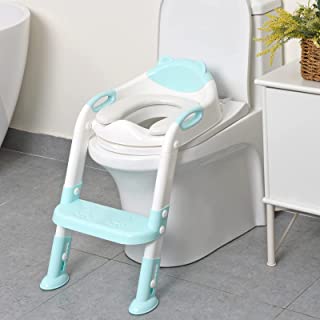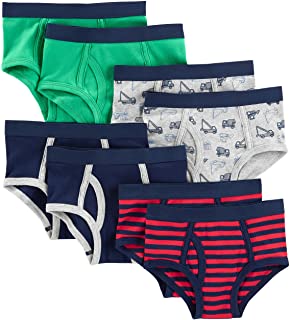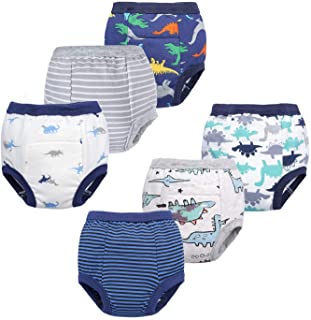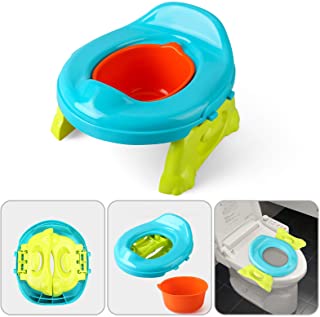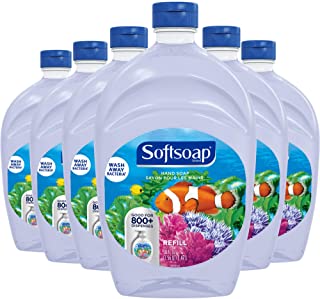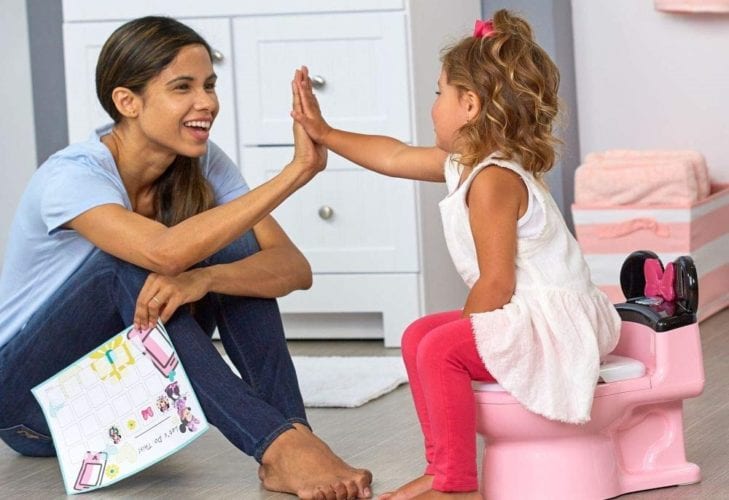
If there’s one truth about parenting, it’s that things are always changing. One day you’re getting to grips with diapers on a newborn and, before you know it, it’s time to start potty training. Being new parents means you might need to try a few options before finding what is best for your little ones. In this article, we look at the potty training journey from all angles and give you tips to make potty training your baby girl a breeze.
What Is Potty Training All About?
Potty training or toilet training is one of the milestones in a toddler’s development. It is different from teaching them how to walk, eat, and clean after themselves, as this is a more personal intuitive experience that can only start when your child is ready. Potty training involves parents and caregivers’ support, patience, and constant communication with the toddler. There does not have to be a power struggle and it works best once you understand your child’s psychological, physical, and emotional readiness.
Is Now The Best Time To Potty Train?
According to the American Academy of Pediatrics, the best time to potty train your child is between 18-36 months. Although there is not enough evidence to show that girls can express themselves earlier than boys, this can vary according to their environment and culture. Medical experts note that any earlier might not get the best results because they have no control over their bladder or bowel. This new skill does not happen overnight, even when your child is ready. You need to be on the lookout for signs that your little girl is ready to potty train.
Why is it important to potty train girls?
Potty training is a huge step for girls in gaining independence and control over their own bodies. Not having to buy and carry diaper supplies or change dirty diapers will make your life as a parent that little bit easier. Once your child is successful in potty training, she will be more confident in doing other things by herself too.
Ready For Potty Training?
To know if your child can begin potty training, she will start exhibiting signals of training readiness. As a parent you will see her hints, so be observant of her physical gestures. You might already be well on the way to knowing that your child is ready.
Knowing they are wet
Children are usually not conscious of their pee or poop because they have no control over their bladder or bowel. If your child started to become aware that their diaper is wet, then it is a clear sign that they are ready for toilet training. Your little girl can now distinguish if they peed and it will become much easier for her to anticipate when it’s time to go.
Diaper stays dry for hours
Once a child is ready, they can control their bladder or bowel movement. Some children learn to control their bladder first, some their bowels. If your child has long periods of dry diapers, they are beginning to learn self-restraint, and it is a good time to start potty training. Be aware too that extended periods without a wet diaper could also be a symptom of toddler dehydration or constipation.
Pulling pants up or down
Your little girl may have watched somebody else remove their underpants when peeing or pooping and she may have wanted to do the same. Wanting to remove her own diapers is a crucial move to avoid wetting herself, and this is one step closer to successful potty training. Being able to learn this step is also a great way to start your child’s independence and boost their confidence.
Shows ‘potty’ interest
The American Academy of Pediatrics says that when your baby girl points to older siblings or even pets who are peeing or pooping, she might be ready to potty train. This interest may mean they are curious and curiosity leads to focus, which is needed while learning to use the potty. Potty training success begins with this training readiness as your child gains interest and recognizes this bodily need.
Follow simple instructions
Some kids are keen to obey a one-step task, fetching or giving an item, or putting things back in their place. This gives them chance to receive praise and kids love to please. Being potty trained is a way to be acknowledged and gain elders’ approval. Potty training also gives them a sense of achievement when accomplished and increases their self-confidence too.
Watches when others are in the bathroom
A role model is a great way to teach young kids new things, especially potty training. Let your child discover what is going on inside the bathroom, as familiarity will make it easier for them to be comfortable with using the toilet by themselves.
Helpful Potty Training Products
1. Potty chair
There are two types of potty chairs you can use on your little girl when they start potty training. It could be a free-standing potty chair, usually floor level to make it easy for the toddler to reach anytime. It could also be a child-sized seat that is placed directly on top of the regular toilet so they will feel more secure and safe from falling into the bowl. If you choose a toilet seat, you will also need a stepping stool so that your little girl can climb up safely.
2. Underwear
Buying underwear means that you are transitioning them from being comfortable wearing their wet diaper to knowing it is uncomfortable to stay wet for a long period of time. This would help them become more familiar with their bodies, and independently control their bladder. Be sure to get the right size so your child feels comfortable wearing them. This training will create physical awareness, so the child will know it is time to use the potty.
3. Training pants
Starting potty training may require more than just underwear, but training pants as well. These pull on and off like regular underpants but have special pad inserts similar to diapers that retain fluids. American Academy of Pediatrics advises that as they start potty training, it is best to change them immediately after they wet themselves. Your daughter has to recognize the need to be dry to encourage her to use the toilet or potty chair.
4. Toilet training materials
A progress chart, some toilet training books, and videos on how to use the toilet will all help to prepare your child. Time your child whenever she wears diapers and note her progress. Congratulate her on all her achievements, however small. Teach her the basic toilet terms like pee, poop, potty, and toilet. Educate her on using the potty chair or the correct way of using the toilet. This may also be the proper time to teach your little girl to correctly wipe from the front to back to avoid infections.
5. Kiddie hand soap
Good hygiene should also be properly observed by you and your daughter during potty training. Once she is ready to start their potty training, be sure to involve her in washing her hands correctly too. Using kid-friendly hand soap can motivate her even more. Choose ones with sweet scents or fun colors to encourage learning this valuable new skill.
Tips For Potty Training
Reward system
Kids are often more excited to do a task when they receive praise for doing it. Potty training is no different. It is a big deal for children to please elders or guardians and completing this process requires their full cooperation. Let them sit on the potty and when your child successfully urinates in it, give them a treat or tell them they did a good job. A hug or a kiss may also serve as a treat whenever the favorite cookie jar is emptied.
Rewards can also keep your child motivated. The AAP suggests giving ‘big’ rewards when they complete a milestone, like being able to run to the potty before they wet their underpants for the first time. Your child is more likely to repeat this until it becomes a routine, within another month or so.
No pressure
A relaxed approach is the best way to potty train your child. Whenever they need to go and don’t make it, change them and move on. Accidents happen, and this is all part of the learning process. Assist them in choosing their potty chair and underpants. Let them decide on the color or the print of their training pants. Cheer them during practice runs or the times they just sit on the potty with or without underpants on. Empower your little girl by making her feel good about potty training, this will encourage her progress. Being ready for potty training does not mean there will be no accidents, especially when she is excited about using the potty, so help your child by focusing on the positive.
Common mistakes
Starting during a stressful time:
Consider delaying potty training if there are any big events in the house. New babies, holidays, vacations, or visitors could make potty training inconsistent, for both the parents and child. Instead, wait until life settles down and routines become normal again. It creates security for toddlers and with fewer distractions around it makes it easier for them to follow instructions and learn new things. It also makes it easier for you to keep your cool if your daughter is struggling, which may show up as meltdowns that her favorite new pair of pants is in the laundry!
Using regular underwear:
Most toddlers love cartoon characters on their underpants. However, regular underwear is not absorbent and can become uncomfortable for the child when wet. By using thick absorbent training underwear your child can get the sensation of wetness without wetting all their clothes. Using a mixture of both kinds of underwear works for most children. Having five to nine clean items of underwear at one time is the best choice to start potty training.
Tight deadlines:
Most toddlers don’t work well under pressure, and a tight deadline for potty training is unrealistic. Make sure you give your child plenty of time to work potty training out. You may need to use several different methods before you find one that suits your child perfectly. It is important to be realistic and patient when potty training because it could take a few weeks, or a few months.
Not paying attention to signs:
Every child has different signs when it comes to needing to use the potty, like a dance, squat, shifting from foot to foot, or holding their genital area. When these signs are not recognized, the child can have an accident. Your job is to recognize the signs and teach your child what they need to do. Take them straight to their potty. After several times, they will begin to make the association between the urge to go and the potty, then they will naturally go there.
Upset over accidents:
Accidents happen from time to time, your little girl is learning new things. Shaming and humiliation will mean she will be scared to try again in the future. Instead, you should teach her that accidents are normal and continue to guide her every time she needs to use the toilet.
Bottom Line
Potty training does not have to be stressful. Although your child may be uncooperative, moody, and even resistant to changes, it is your duty as a parent to help them succeed. Bring lots of patience, understanding, and positive energy with you. Breathe in and calmly interact with your daughter to make becoming potty trained as enjoyable as possible for both you and her.

